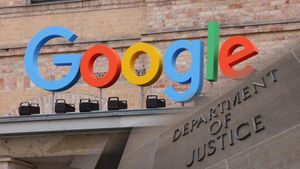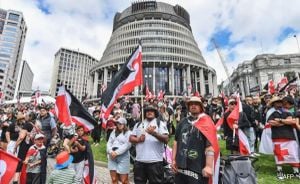With the holiday shopping season approaching and recent election results generating excitement among consumers, optimism is evident across various sectors of the economy. Data from CivicScience has shed light on shifting consumer behaviors, particularly as Black Friday and Cyber Monday loom on the horizon. Notably, these insights indicate increasing engagement from consumers, particularly Republicans, who are feeling buoyed by the election outcome.
According to recent polls, more than half of Americans, 54%, plan to engage in shopping during the Thanksgiving weekend, up from 46% the previous year. Notably, anticipation for Black Friday sales is particularly high, with participation expected to surge compared to last year. CivicScience data shows 34% of Americans are gearing up to shop on Black Friday, up from 25% last year, and 26% on Cyber Monday, which is also up from 22%. Given this uptick, brands are bracing for record-breaking sales and heightened consumer intent.
One of the more interesting aspects of this increase is the noticeable shift among Republican consumers. Prior to the elections, it was Democrats leading the charge for Black Friday shopping. Post-election, Republicans have surged, with 64% now indicating they plan to shop, compared to just 45% before Election Day. This indicates how political sentiments can have real-world effects on spending habits.
The excitement of the upcoming shopping events isn’t only due to consumer sentiment, as there's a broader motion of economic optimism. The National Retail Federation (NRF) forecasts 183.4 million individuals will participate in shopping activities over the Thanksgiving weekend. This renewed enthusiasm appears connected to the cumulative effects of the election, with many consumers excited for potential discounts and early deals.
Despite this growing enthusiasm, business leaders are still expressing caution. Insights from various surveys reveal mixed feelings among boardroom members, with only about 52% of those surveyed by the Institute of Directors embracing optimism about the national economic outlook—up from 28% the previous year. While some companies express confidence, challenges such as low consumer demand remain high on their list of concerns, indicating the precarious nature of the current economic environment.
Looking beyond shopping events, other factors contribute to this complex economic picture. Cost factors, such as inflation rates, continue to influence spending habits. Recent figures have shown inflation rising to 2.3% as of October after having been 1.7% the month prior. Analysts contend this could alter consumer purchasing behavior as they adjust to the costs of everyday essentials.
While these economic indicators differ from one sector to another and regionally, the resiliency shown by consumers is noteworthy. Retail analysts point out the increasing number of people asserting they will spend more during the holiday shopping season, as many are actively searching for deals. With 42% of holiday shoppers indicating they are on the lookout for promotions, retailers have started to craft strategies aimed at capitalizing on this enthusiasm.
Retailers are not only focused on Black Friday and Cyber Monday, but they're also preparing for Small Business Saturday, which is gradually receiving attention. More shoppers have expressed intentions to shop local, with interest rising as consumers become more aware of the importance of supporting small businesses post-pandemic.
This revitalization plays out amid the backdrop of changing consumer preferences. Interestingly, this year, there's also been growth among shoppers who are purchasing non-gift items. Reports suggest as many as 40% of shoppers are planning on buying products for themselves during seasonal sales. This contrasts with the traditional focus on gift-buying, showcasing how the pandemic has altered shopper mindsets.
The interplay of consumer optimism, brand strategies, and changing habits provides insight not just for retailers, but also for those observing how the economy adapts to political and social shifts. This holiday season is being seen as more than just profit-driven; it's also about fostering connections between communities and businesses. People are eager to shop, but they are also embracing the spirit of giving by purchasing gifts for loved ones.
The mood among consumers is something businesses can’t ignore. Decisions made about marketing strategies, product availability, and promotional deals will be important as the retail space looks to leverage this post-election optimism. Brands should remain aware of the subtleties and shifts within consumer sentiments as they strive to end the year on high notes, regardless of the inflationary challenges lurking underneath.
The outcome of the elections continues to reverberate, hinting at how governance can play out at the shopping cart level. Whether consumers are Democrat, Republican, or independents, the overarching narrative remains clear: Americans are ready to spend this holiday season with hope and expectation.
So what does all this mean moving forward? With economic conditions remaining variable, the degree to which consumer confidence can be sustained hinges on multiple factors: how consumers perceive economic stability, how inflation impacts their disposable income, and whether the festive spirit leads to successful shopping nights. The happening of Black Friday and Cyber Monday this year could well set the tone for how retail fates can turn post-election.
Long-term success for retailers may equally depend on their ability to meet consumer demand efficiently and nurture relationships with shoppers through events like Small Business Saturday. The outlook for holiday shopping appears to reflect initial optimism, but just as consumers are eager to shop, they too will be measuring satisfaction against their experiences at stores and online.



